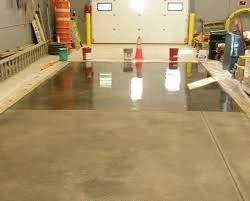eEpoxy concrete floor coverings have become increasingly popular in recent years, thanks to their durability, aesthetic appeal, and ease of maintenance. Whether you're looking to upgrade your garage, basement, or commercial space, epoxy coatings offer a cost-effective solution that can transform your space. In this guide, we'll explore everything you need to know about epoxy concrete floor coverings, from their benefits and application process to maintenance tips and design options.
Benefits of Epoxy Concrete Floor Coverings
Durability: Epoxy coatings create a tough, long-lasting surface that can withstand heavy foot traffic, impacts, and abrasions. This makes them ideal for high-traffic areas like garages and warehouses.
Chemical Resistance: Epoxy coatings are resistant to chemicals, oils, and stains, making them easy to clean and maintain.
Aesthetic Appeal: Epoxy coatings come in a wide range of colors and finishes, including metallic and flake options, allowing you to customize your floor to suit your style.
Safety: Epoxy coatings can be formulated with slip-resistant additives, making them safer to walk on, even when wet.
Cost-Effective: Compared to other flooring options, epoxy coatings are relatively inexpensive, making them a cost-effective choice for budget-conscious consumers.
Application Process
Surface Preparation: Proper surface preparation is crucial for a successful epoxy coating application. This involves cleaning the surface thoroughly and repairing any cracks or damage.
Primer Application: A primer is applied to the clean, dry surface to ensure proper adhesion of the epoxy coating.
Epoxy Coating Application: The epoxy coating is applied to the primed surface using a roller or squeegee. Multiple coats may be required, depending on the desired thickness and finish.
Topcoat Application: A topcoat is applied to the epoxy coating to provide additional protection and enhance the floor's durability and appearance.
Curing: The epoxy coating is allowed to cure for the specified time, typically 24-72 hours, before the floor can be used.
Maintenance Tips
Regular Cleaning: Sweep or vacuum the floor regularly to remove dirt and debris. Use a mild detergent and water to mop the floor as needed.
Avoid Harsh Chemicals: Avoid using harsh chemicals or abrasive cleaners on the epoxy coating, as they can damage the finish.
Protective Measures: Place mats or rugs in high-traffic areas to protect the epoxy coating from wear and tear.
Avoid Impact: Avoid dropping heavy objects or dragging furniture across the floor, as this can damage the epoxy coating.
Regular Inspection: Inspect the floor regularly for any signs of damage or wear, and repair as needed to prevent further damage.
Design Options
Solid Color: Epoxy coatings are available in a wide range of solid colors, allowing you to create a sleek, modern look or a bold, vibrant finish.
Metallic: Metallic epoxy coatings create a stunning, three-dimensional effect that mimics the look of natural stone or marble.
Flake: Flake epoxy coatings incorporate decorative flakes into the finish, creating a textured, slip-resistant surface.
Custom Designs: Epoxy coatings can be customized with stencils, logos, or other designs to create a unique, personalized look.
Conclusion
Epoxy flooring installation offer a durable, versatile, and eost-effective flooring solution for a variety of applications. Whether you're looking to upgrade your garage, basement, or commercial space, epoxy coatings can transform your space with their durability, aesthetic appeal, and ease of maintenance. Consider epoxy coatings for your next flooring project and enjoy a beautiful, long-lasting floor that enhances your space for years to come.



